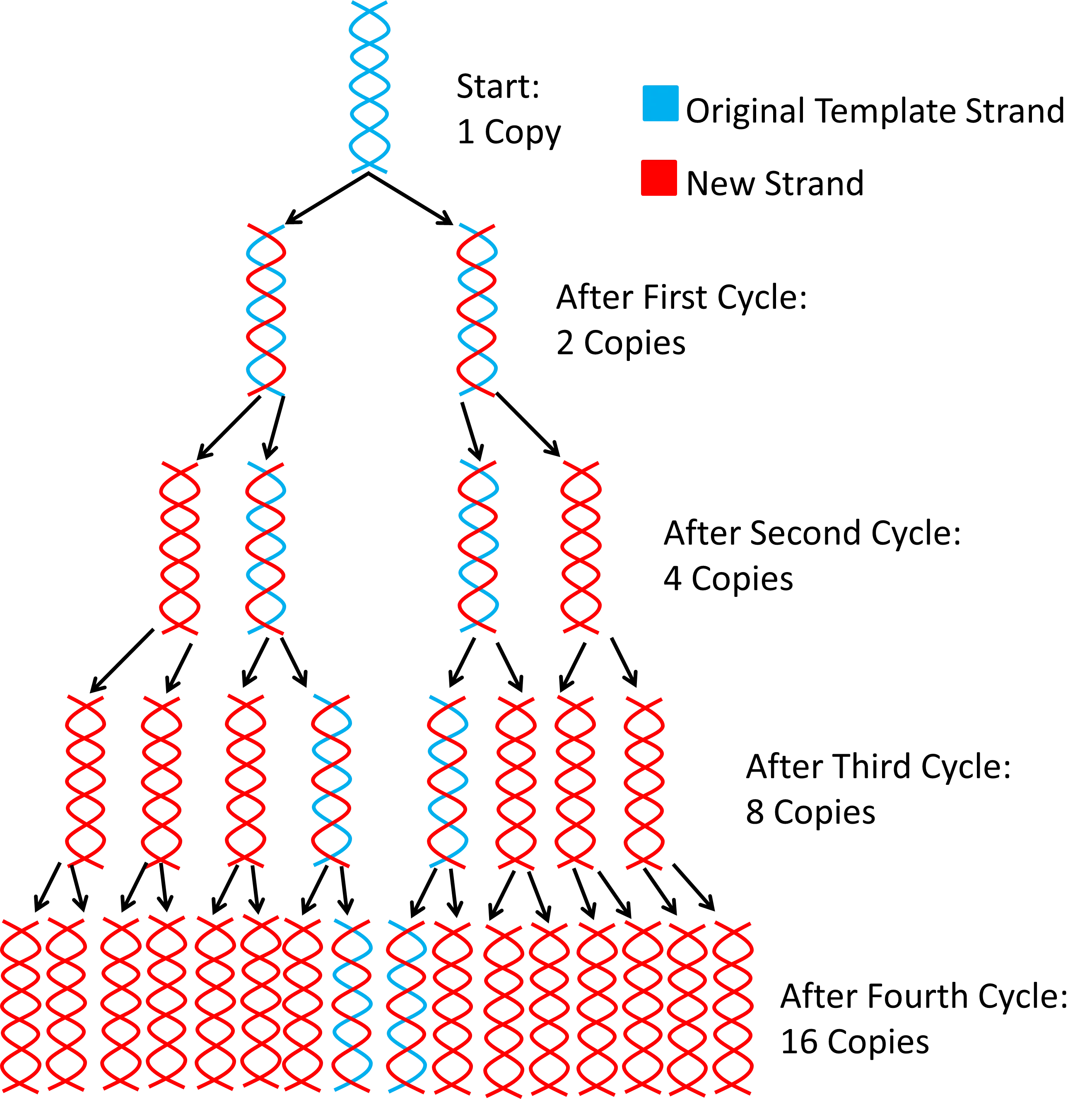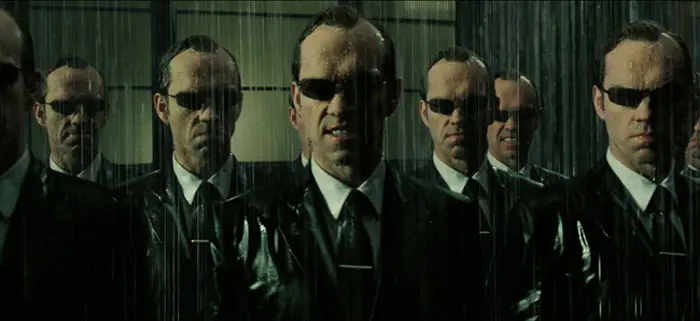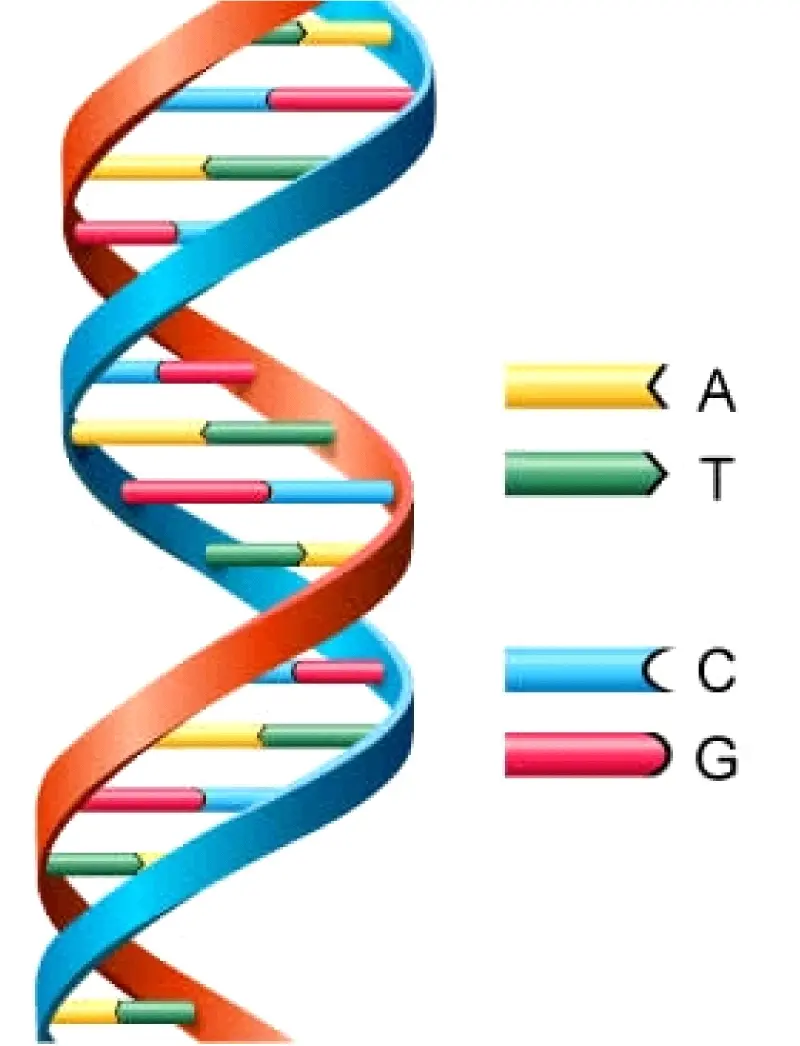I took a little summer vacation from IMOS to focus on, among other things, getting comfortable in my new community manager shoes. It took some time to get the fit right, but they're pretty comfortable, and I'm finally getting used to the squeaking.

Like my neighbor, the idea of cloning a human is one of those things that shows up in the news every now and then, but has yet to make any formal appearances. We know that cloning research is going on somewhere, and we're apparently always close to a breakthrough, but the Big Day where we finally meet a cloned human has yet to happen. Because this is a technology that seems to be right over the horizon, more than one writer has told me they're a little hesitant to pursue the subject in their own work, for fear that actual cloning experiments will start appearing in the news any day now and make their plot lines look ridiculous.
This fear isn't unjustified. As you'll read below, we've got the basic formula for cloning entire organisms down. While legal and technological hurtles remain, the ability to clone a human is certainly within view, and if that day ever comes, it's likely going to change our world in more ways than we can predict. A world with successful cloning techniques is a ripe world for fiction writers to explore, so I'll do my best to help you get your feet wet.
I'm going to spend some time going over the science of cloning so you can feature something more impressive than a magic cloning machine in your own story, but I'm also going to cover some of the ethical issues surrounding cloning, since the debate around the morality of human cloning is a big reason why cloning entire humans isn't yet an area of active research. Hopefully, you'll not only get some of the terms down, but also some information on how you might expect your world to react to this technology.
Background Biology Lesson
Because cloning genetics is a little higher up on the scientific totem pole than most people study in high school, let's do a quick background lesson. If you're already pretty familiar with basic cellular biology and genetics, then be patient and wait for the rest of the class to finish reading before moving on to the next section.
Atoms are the building blocks of matter, and cells are the building blocks of organisms. Cells are the smallest things that can be considered alive, unless you feel like wading into the debate over viruses. Almost every cell type contains the same basic components (such as a nucleus, mitochondria, etc), but cells can come in a lot of different shapes and sizes, depending on their function within a multicellular organism. For instance, fat cells (adipocytes) are built around the storage of lipids, while red blood cells (erythrocytes) lack a nucleus and carry a special protein called hemoglobin, which binds to oxygen and allows it to be carried throughout the body.
 Cells are super neat, since they have the ability to adapt to an incredible number of functions. They can form bone, neural tissue (like the brain), muscles, and so forth. Embryos (developing organisms) are rich in stem cells, which can specialize to become any cell the body happens to need. The process of how a cell "knows" what it needs to become is a bit complicated, but just know that stem cells are an important component to growing new tissue and repairing damaged tissue because of this transformative ability.
Cells are super neat, since they have the ability to adapt to an incredible number of functions. They can form bone, neural tissue (like the brain), muscles, and so forth. Embryos (developing organisms) are rich in stem cells, which can specialize to become any cell the body happens to need. The process of how a cell "knows" what it needs to become is a bit complicated, but just know that stem cells are an important component to growing new tissue and repairing damaged tissue because of this transformative ability.
All cells contain DNA. The easiest way to think of DNA is as a script, or perhaps a program code. It comes in a strand of information made up entirely of four types of molecules known as nucleotides. Traits are linked to specific ways that these nucleotides are arranged, so the DNA forms an instruction manual for how the organism is to be built and maintained. Proteins will read the DNA and (after several steps) create other proteins, which will then head out to perform the duties it was assigned.
The DNA script is VERY strict, which means that if there was a mistake in the DNA strand due to damage or incorrect creation, then the proteins will carry out that jumbled up mess of a code anyway. The result can be harmless, but can also lead to mutations, such as cancer or superpowers, if you live in a comic book. It's also important to note that almost every cell in the human body contains the full set of DNA, even though any one cell only uses certain sections of it for its specific function.
Alright, that's enough to get you started. So let's dive into the biology of cloning.
Biology of Cloning
When we talk about cloning without specifying anything further, we're really just talking about making an exact copy of some biological material. That might be an organic molecule (like fragments of genetic material), a single cell, or a multicellular organism. There are a few different methods as to how this is achieved, depending on the desired end result, but let's first cover how we would do this in a very generalized way.
Remember that the key to uniqueness in any organism is due to the unique pattern found in the DNA, so we could clone something just by getting proteins to read the piece of genetic material we want to clone. The simplest example would be if we wanted to clone a small piece of DNA, which is usually a gene we're interested in studying. We would cut that gene out of the DNA strand using special enzymes (catalytic proteins) called restriction enzymes. Then, using a sciencey process called PCR, we can mix our DNA fragments in a slushie with DNA-copying proteins called polymerases, which will go to town copying our DNA strands. These things are workaholics, and the PCR process can result in millions of copies of the targeted genetic sequence, known as gene amplification.

Of course, you probably aren't interested in copying mere genetic fragments for your story, but I wanted to describe this relatively simple process to show you that there really isn't anything magical at work here. Polymerase proteins don't think about what they're doing; if you put a piece of DNA they can read in front of them, they'll start copying it regardless of the end result. Pretty cool, right?
However, the process I described above only produces endless quantities of genetic material, which is really no different than running a script though a copying machine a few million times. What if you're a science fiction author, and want to clone a few million stormtroopers to take over the galaxy?

Cloning an Organism
Okay, so remember when I told you that almost every cell has a complete set of DNA? That doesn't intuitively make sense, because reading from the same script is going to get every cell to do the exact same thing, isn't it?
The secret is that cells can figure out which part of a DNA strand they need, and activate only those parts through a process called gene regulation. Gene regulation is a pretty complicated process, but it means that specific genes can be switched on and off whenever a cell needs it. If you're interested in studying how this sort of thing might work, take a look at the lac operon, one of the most basic forms of genetic regulation you can study. The lac operon is a genetic sequence that regulates the metabolism of lactose in E. coli bacteria, but only activates in the presence of lactose. Moo.

Anyway, the point is that these gene regulations cause different cells to read different pieces of the same overall script in order to produce different functions. So, knowing this information, what do you think would happen if you took the nucleus (which contains the DNA) from one cell, and put it in another?
Wait, it couldn't be that simple, could it?
The process is called somatic-cell nuclear transfer (SCNT), which is science talk for:
1) Take DNA from cell you want to clone.
2) Put DNA in a different host cell.
3) ???
4) Profit!
Actually, the "???" is "let the host cell do what it usually does." In SCNT, the doner DNA is placed in the egg cell of another organism. This essentially reprograms the egg cell. The egg cell will then begin dividing and differentiating using the new DNA as a template. The end result is an embryo with the exact same genetic makeup as the organism which donated the DNA.
Yeah, it's easier said than done, but that's really all there is to the process. We simply let the cell do all hard work for us, because scientists are smart. If we aren't using actual living organisms to incubate the developing embryos, a la Brave New World, then scientists carry the additional burden of keeping the cloned organism alive through development, which includes nutrients, environmental control, and so forth. Really, unless you've absolutely perfected cloning technology and intend to mass-produce clones for some reason, your scientist isn't likely to go for the test tube clone over growing it inside another organism.
Why Clone?
This question has a lot of different answers, and those answers change based on whether or not the word "humans" is involved. So let's first take a look at cloning non-human animals.
Cloning and genetic engineering go hand-in-hand. We're moving the genes from one cell to another cell, and we have had the capacity to introduce foreign and engineered genes into established genomes for a while now. Hell, we're even in the process of creating synthetic bacteria as we speak. So when we talk about cloning animals, we're usually talking about doing so with some degree of modification. For instance, we can create animals that produce human proteins (like antibodies), which allows us to mass-produce desired medical compounds inside a living organism. Again, we're seeing that in cloning, we're a fan of letting nature do the hard work for us. Why create medicines by hand when a zebra fish can do it for us? By cloning the organism with the genetic modification, it prevents us from having to introduce the mutation into each individual genome manually, which saves time and resources.
Another exciting area of cloning research involves resurrecting extinct species. The idea is that if we can get a good genetic sample (generally from animals that have gone extinct relatively recently), then we can use that DNA to grow the animal inside of a closely-related species, and effectively bring the extinct species back to life. We haven't been particularly successful at this yet; the closest we've gotten so far is having temporarily resurrected the extinct Pyrenean ibex in a single individual which lived for only seven minutes after birth, but this is certainly one of the more popular goals of reproductive cloning. The Woolly Mammoth is also a popular candidate for resurrection, and scientists seem pretty confident that they can get a few popped out in our lifetime. Let's hope they stick with things that are fuzzy, though, for Jeff Goldblum's sake.

Humans
When we start talking about human cloning, things get a little trickier. We need to differentiate between therapeutic cloning and reproductive cloning.
Therapeutic Cloning
Therapeutic cloning is the cloning of specific human tissues, rather than full human beings. While controversial, it doesn't really bring up the same sorts of issues that reproductive cloning does (more on this later), and is a pretty active area of research. There are real, tangible benefits to not only producing human organs in a lab, but also being able to produce organs with an exact specified genetic makeup.
See, around 18 people die each day waiting for an organ transplant, and right now, organs are kind of hard to come by. There are a number of factors in play here, such as the fact that people tend to like their organs, and even if they are willing to donate, some organs don't come in twos, and therefore can't be donated from a living person. Currently, someone is added to the waiting list for an organ every ten minutes, and you're prioritized on the waiting list depending on a variety of factors, including age, organ needed, health habits, and how close you are to death.
But it's not just that a patient can wait for any random liver. You have to have a liver that matches to your blood type, or the organ will be rejected by the body, which is not only a bummer for the patient, but also a waste of a valuable liver. Bodies are very picky about what goes into them (that's what she said), and if it doesn't like what it sees (she also said that), then it's likely to boot the organ out the front door where it will spend the night drinking alone and watching The Princess Bride again (she broke my heart, don't ask).
An organ that is an exact genetic replica of the one that needs to be replaced obviously is going to be much more likely to succeed in a transplant, since the body is going to recognize it as the original, first edition print of the liver, so you can see why therapeutic cloning is such a big area of research. Perfecting these techniques can end the organ shortage problems in the medical field, and a world in which any failing organ can quickly and successfully be replaced is easily enough setting for a novel, in this writer's humble opinion.
Reproductive Cloning
Ah, but now we've arrived at why most of you are reading this article. What about cloning a full human being?
Well, biologically, it's as possible to clone a human being as it is to clone any other animal, and that itself is the problem. See, even though we have cloned animals, we're not particularly good at it. Remember Dolly, the celebrity cloned sheep that was named for boobs? Yeah, it took 277 attempts before they managed to create Dolly, and while she was able to mate and produce offspring, she died after only six years, while most animals in her species could live for twelve.
To be fair, the scientists involved with the project say that Dolly's death wasn't necessarily related to her being a clone, but she isn't the only cloned animal to suffer from poor health. Most cloned animals seem to suffer from chronic health conditions, including advanced aging, immune system issues, and enlarged organs.
Even though I made the act of cloning seem relatively straightforward, the process of actually creating a life is not as simple; there are layers upon layers of steps that a cell goes through in development to become a full grown organism, and many of those steps involve dealing with heritable traits that are not carried in the genetic code, which is an area called epigenetics. Some suspect that epigentic problems involved with cloned cells might be responsible for the typical unhealthiness of many cloned organisms.
Essentially, our current level of technology is akin to removing the engine from a jet and trying to hook it up to a '97 Honda Accord. The fact that we can do it is absolutely miraculous, but there are a lot of failures that result in broken cars, and the successes don't generally work as well as they should.
Ethical Considerations in Human Cloning
So you see why this might be a problem in terms of trying to clone a human, right? You end up with a lot destroyed, failed embryos, and the ones that work aren't likely to be the healthiest of individuals. This is a bit distressing, even if you aren't in the camp that considers a developing human embryo a life with rights. Combine that with the various issues with identity crises, legal problems, and how society as a whole considers valuable the uniqueness of an individual, and you can see why there is a lot of pushback on reproductive cloning.
Another problem with reproductive cloning is that we really have no real reason to try it on humans right now. With therapeutic cloning, we could produce the organs we need without having to kill off clones to get them, and we as a species don't generally have any problems with engaging in reproductive practices. So why should we clone people, if it is not only risky and morally questionable, but also provides us no real benefits?
Well, says the opposition, because people should have the right to reproductive freedom. See, for the pro-cloning side, cloning is simply another form of reproduction, and falls much in the same category as the right to have an abortion. Why should we tell people what they can and cannot do with their genetic material? What if two lesbians want to have a genetically-related baby? What if a parent wants to replace a dead child with an identical copy? Do we owe it to society to try to clone geniuses and Hugo Weavings?

I'm not here to tell you what to think one way or the other. Just realize that this is an issue with plentiful arguments on both sides, arguments which are probably worth addressing if human cloning is going to be a major point in your book. The most interesting stories tend to be the ones that address unpredictable, small-scale results of science-fiction technology like cloning, so get creative here. Ethical issues handled well always make for good reading.
Conclusion
This article delved a little deeper into the ethical issues than most articles I write, mainly because I would imagine most stories that feature clones are going to end up making some statement about cloning. Of course, there's a lot more to say about it than what I covered here. Cloning is one of those topics which is technically science fiction, but is likely to become a more pertinent, realistic issue within the next few decades. After all, the technology, though mostly inadequate, is available for human cloning. Really, all that's preventing us from exploring that space is our own limitations on what we decide we should and should not do as a species.
Make no mistake; this isn't a future we're going to easily be able to predict. What's going to matter in the end is the opinion of the people, and that opinion is going to be shaped by all literature, including fiction. Our attitudes toward the technology will decide whether or not we go over that cliff. So get out there and write something that convinces us how we should proceed into the future.

About the author
Nathan Scalia earned a BA degree in psychology and considered medical school long enough to realize that he missed reading real books. He then went on to earn a Master's in Library Science and is currently working in a school library. He has written several new articles and columns for LitReactor, served for a time as the site's Community Manager, and can be found in the Writer's Workshop with some frequency.









